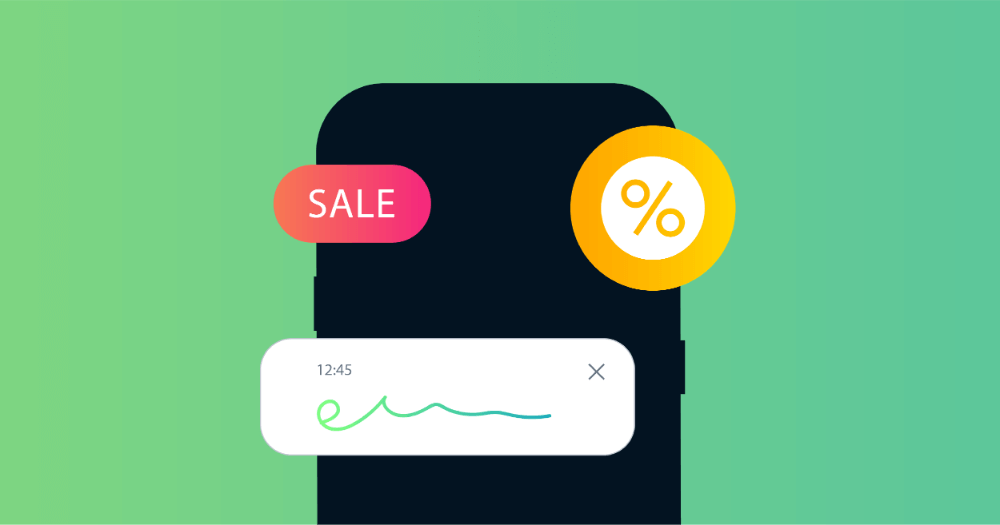📑Table of Contents:
- Why Follow-Up SMS Messages Matter
- When to Send a Follow-Up SMS
- How Many Follow-Ups Are Enough?
- Crafting the Perfect Follow-Up Message
- Sample Follow-Up SMS Templates
- Best Practices for Follow-Up SMS Messages
- Mistakes to Avoid in Follow-Up SMS Campaigns
- Using Automation for Smart Follow-Ups
- The Power of Personalization
- Testing and Optimizing Follow-Up Campaigns
- Bringing It All Together

Businesses often lose sales not because of poor products but due to missed follow-ups. A single well-timed text can turn hesitation into action. In this guide, you’ll learn how to write effective follow-up SMS messages, when to send them, how often, and what mistakes to avoid.
Why Follow-Up SMS Messages Matter
Follow-ups keep your brand in your customer’s mind. Many people read texts within minutes, which makes SMS one of the fastest ways to reconnect. A thoughtful follow-up can build trust, show attentiveness, and encourage conversions. Without it, leads might go cold, and opportunities could fade away.
When to Send a Follow-Up SMS
Timing is crucial. You want to strike while interest is high but without being intrusive. The right intervals depend on your business and audience behavior.
Here are general guidelines for timing:
- First Follow-Up: Send 24–48 hours after the initial message or inquiry. This keeps the conversation fresh.
- Second Follow-Up: Wait three to five days before sending another message. It shows persistence without pressure.
- Final Reminder: A week later, send a last, polite follow-up. Keep it short and friendly.
You can adjust these intervals depending on your campaign type. For event reminders, follow-ups can be closer together. For sales campaigns, spacing them out builds anticipation.
How Many Follow-Ups Are Enough?
Sending too many messages can feel pushy. However, too few may not move the needle. The ideal range is two to three follow-ups after the initial message. This allows you to remind, nudge, and close the loop without overwhelming your audience.
Also, always give recipients an option to opt out. Transparency builds credibility and keeps your brand compliant.
Crafting the Perfect Follow-Up Message
Writing a follow-up text is both art and strategy. The goal is to remind the recipient of your offer while motivating them to act.
Follow these tips for effective writing:
- Start with context. Remind them who you are or what you’re following up on.
- Add value. Offer an incentive, useful link, or update.
- Use urgency carefully. A gentle reminder can encourage faster responses.
- Keep it short. SMS works best when messages are under 160 characters.
- End with a clear CTA. Guide the reader toward the next step.
Example Structure:
- Greeting
- Context reminder
- Value offer or message purpose
- Call to action
- Optional opt-out link
Sample Follow-Up SMS Templates
Here are some templates you can tailor to fit your campaigns:
For sales leads:
“Hi Sarah, just checking if you’re still interested in our marketing package. We’re offering 10% off this week. Let me know if you’d like more details!”
For event registration:
“Hi Mike, we noticed you started signing up for our webinar but didn’t finish. Seats are filling fast — complete your registration today!”
For abandoned carts:
“Hey Alex, you left something in your cart! Complete your purchase now and get free shipping. Shop here: [link]”
For service feedback:
“Hi Emma, thanks for using [Company Name]. Could you take 30 seconds to share your feedback? Your input helps us improve: [link]”
For appointment reminders:
“Hello David, this is a reminder for your appointment at [Business Name] tomorrow at 2 PM. Reply YES to confirm or call us to reschedule.”
Each message uses clear intent, adds value, and drives action. They also maintain a friendly and professional tone.
Best Practices for Follow-Up SMS Messages
A strong follow-up strategy balances persistence with respect. Here are best practices to ensure success:
- Segment your audience. Send relevant messages to each group based on interests or actions.
- Use automation tools. Automate follow-ups using CRM or SMS marketing platforms to save time.
- Personalize every message. Use the recipient’s name and reference their last interaction.
- Measure engagement. Track open rates, clicks, and replies to refine your follow-up timing.
- Comply with regulations. Always obtain consent and provide opt-out instructions in every message.
- Maintain consistency. Use a tone that aligns with your brand’s voice across all follow-ups.
Mistakes to Avoid in Follow-Up SMS Campaigns
Many businesses unintentionally push customers away through poor follow-up practices. Here’s what to avoid:
- Sending too many messages. Bombarding users leads to opt-outs.
- Being too vague. Always mention the reason for your message.
- Using generic templates. Tailored messages feel more human and boost conversions.
- Ignoring timing. Late-night or early-morning texts feel intrusive.
- Skipping CTAs. Without direction, users won’t know what to do next.
- Neglecting data. Use analytics to adjust timing and tone based on performance.
Avoiding these errors can dramatically improve your conversion rates and customer relationships.
Using Automation for Smart Follow-Ups
Manual follow-ups are time-consuming. Automation tools make it easy to schedule and personalize texts based on user behavior. For instance, when a customer abandons a cart, an automated follow-up can go out within hours. Similarly, you can set triggers for birthdays, renewals, or service reminders.
Modern SMS platforms like ClickSend, EZ Texting, or Twilio allow detailed workflows. You can track engagement, pause sequences, and adjust your message flow as you learn more about your audience.
The Power of Personalization
Personalization is not just using a name — it’s about context. Tailor messages to user actions, preferences, and past purchases. When customers feel recognized, they’re more likely to engage.
Examples of personalization include:
- Referring to past purchases or appointments
- Offering custom discounts
- Adjusting tone for loyal versus new customers
Testing and Optimizing Follow-Up Campaigns
Don’t guess what works. Test your messages. Try different tones, CTAs, or sending times through A/B testing. Measure which versions bring higher response rates.
Experiment with:
- Message length
- Offer type
- Time of day
- CTA phrasing
Continuous testing helps fine-tune your approach and improve ROI.

Bringing It All Together
Follow-up SMS messages bridge the gap between interest and conversion. They remind customers, spark engagement, and increase loyalty when done right. The secret lies in thoughtful timing, personalization, and respect for your audience’s preferences.
When you combine automation, data insights, and well-written copy, every message becomes a powerful tool to drive results. Keep refining your follow-up process, and you’ll soon see measurable improvements in response and conversion rates.
